Buyers Guide to Rear Bike Lights
At the time of writing this guide, we are rolling through Autumn and heading towards Winter. It is undoubtedly the time of year that cyclists will be thinking about bike lights. In our opinion, rear bike lights should be used all year round when cycling - especially on the road. Bike lights come in different shapes, sizes and brightness output. Rear bike lights are ultimately designed to let other road users see you. They use single or multiple LED's and can emit fixed, flashing or sometimes a pulse beam. We have put together a basic guide of some of the things to think about when choosing rear bike lights.*It is important to note that Rule 60 of the Highway Code in the UK states -At night your cycle MUST have white front and red rear lights lit. It MUST also be fitted with a red rear reflector (and amber pedal reflectors, if manufactured after 1/10/85). White front reflectors and spoke reflectors will also help you to be seen. Flashing lights are permitted but it is recommended that cyclists who are riding in areas without street lighting use a steady front lamp.This is falls under the RVLR (Road Vehicle Lighting Regulations 1989) regulations 13, 18 & 24
Output
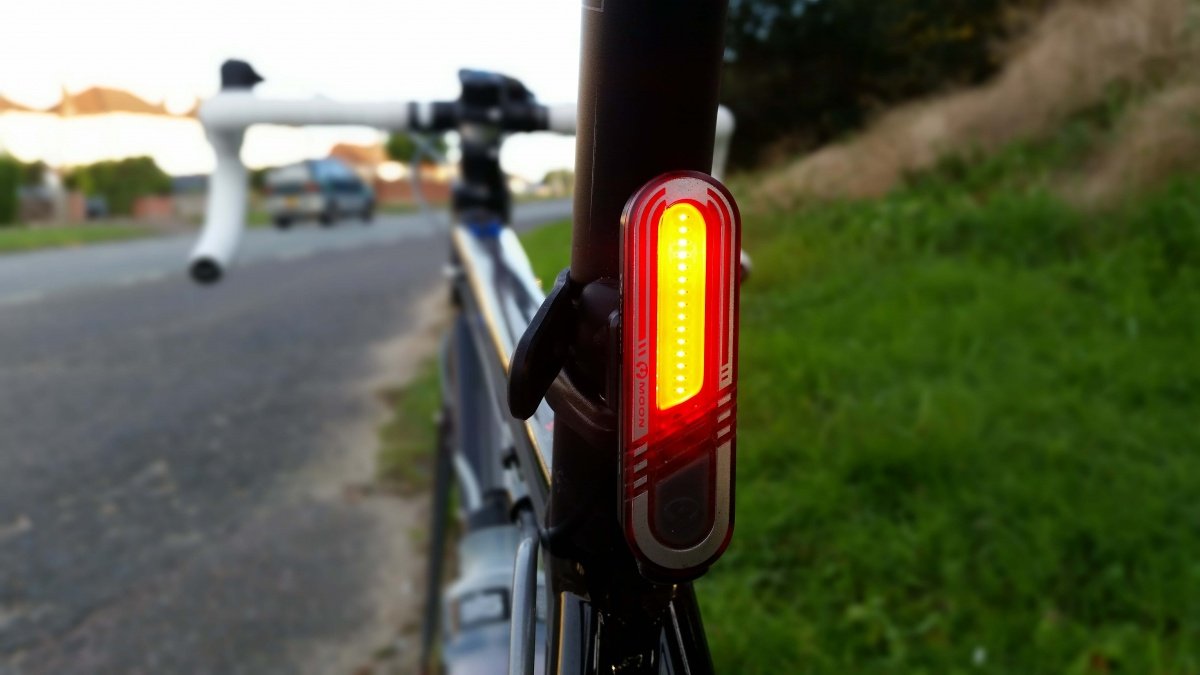 A bike light brightness is measured in Lumens. This is the amount of visible light that is detected by the human eye. To give you an idea - a 60w light bulb is the equivalent to around 800 Lumens. Rear lights will commonly have a lower Lumen output than front lights. This is because their primary function is to make you more visible to others - rather than the letting you see where you are riding. Front lights can kick out anything from 15 Lumens to several thousand Lumens. Whereas rear bike lights will more commonly measure around 5 to 50 Lumens. These are are perfectly suitable for night riding and commuting in built up areas. But some brands make more powerful rear lights with brightness of 100-150 Lumens. These are more suited to night riding in the country side or where there is no street lighting or poor visibility.
A bike light brightness is measured in Lumens. This is the amount of visible light that is detected by the human eye. To give you an idea - a 60w light bulb is the equivalent to around 800 Lumens. Rear lights will commonly have a lower Lumen output than front lights. This is because their primary function is to make you more visible to others - rather than the letting you see where you are riding. Front lights can kick out anything from 15 Lumens to several thousand Lumens. Whereas rear bike lights will more commonly measure around 5 to 50 Lumens. These are are perfectly suitable for night riding and commuting in built up areas. But some brands make more powerful rear lights with brightness of 100-150 Lumens. These are more suited to night riding in the country side or where there is no street lighting or poor visibility.
Battery
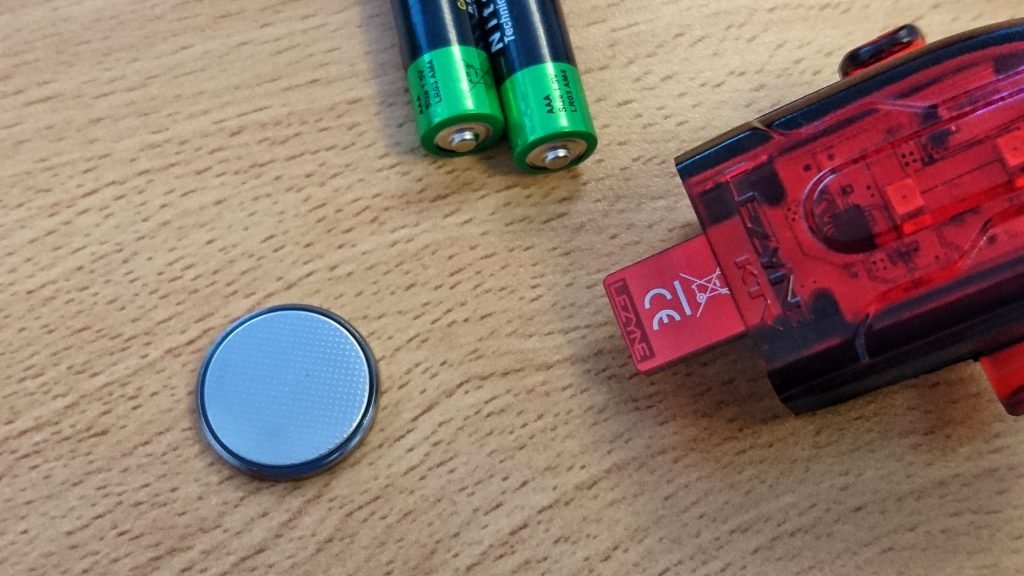 Gone are the days of the enormous Ever Ready bike lights and the equally large D cell batteries. For those of you who are too young to remember these - ask your parents. Nowadays, bike lights will usually be one of 3 options when it comes to batteries;
Gone are the days of the enormous Ever Ready bike lights and the equally large D cell batteries. For those of you who are too young to remember these - ask your parents. Nowadays, bike lights will usually be one of 3 options when it comes to batteries;
- USB Rechargeable - These lights have an non-accessible battery but come with a micro USB cable. This means you can charge your bike lights via a computer or laptop, as well as plug socket (assuming you have suitable plug to connect the cable). Some manufacturers like Lezyne have cleverly integrated the USB connector into the light. This means no need for cables.
- AA/AAA Alkaline or Lithium Batteries - These are you common household, used in just about everything batteries. Some brands still like the simplicity of using easy to obtain, low cost batteries in their lights. The great thing about these lights is that you can buy the batteries just about anywhere and they don't always need to be very expensive to keep your lights running. However, these lights can be a bit bulkier or heavier to accommodate the batteries. Also it is worth having a spare set of batteries in case your run low/out.
- Coin Cell Batteries - These are the super-thin batteries which, as the name suggests look like a coin. These batteries are around 3 volts in power and are usually used in very compact bike lights or blinkers. Although these are becoming less common. They are also less convenient that using standard 'A' batteries or USB rechargeable lights.
Modes
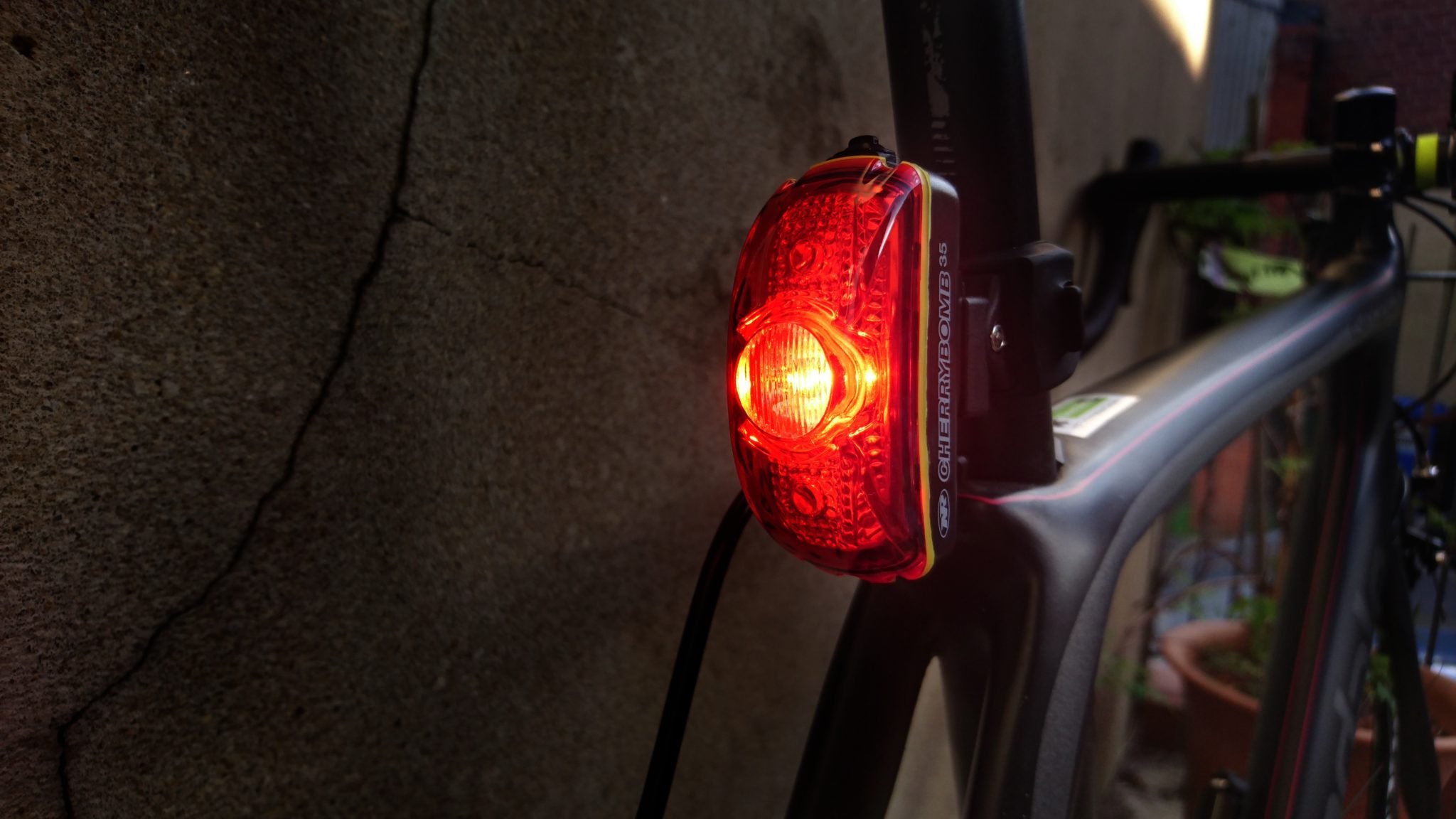 Many rear bike lights come with more than one 'output' setting. In fact some come with too many settings. But the different mode options mean you can set your rear bike light between a fixed 'on' mode or a flashing mode. Flashing settings are designed to draw attention to others and are useful for commuting. The flash setting or strobe as some brands label it - is also a good idea for riding during the daytime. Bike lights that provide good daytime visibility are becoming more popular with many safety-conscious cyclists. These lights often have a higher Lumen output to counter bright sunshine.
Many rear bike lights come with more than one 'output' setting. In fact some come with too many settings. But the different mode options mean you can set your rear bike light between a fixed 'on' mode or a flashing mode. Flashing settings are designed to draw attention to others and are useful for commuting. The flash setting or strobe as some brands label it - is also a good idea for riding during the daytime. Bike lights that provide good daytime visibility are becoming more popular with many safety-conscious cyclists. These lights often have a higher Lumen output to counter bright sunshine.
Fittings
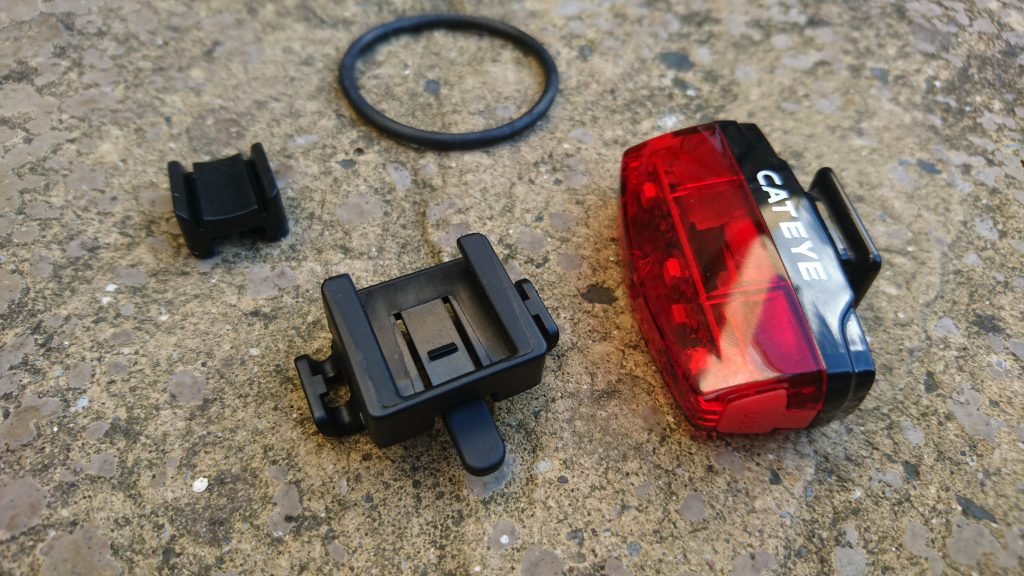 Rear bike lights will usually be mounted on a bike seat post. The RVLR stipulate that rear lights should be positioned centrally or offside, between 35cm and 1.5m from the ground, at or near the rear, aligned towards and visible from behind. This is because they are at a good eye-level for (most) other road users to see you. Historically, bike lights can with a bracket that would fix to your bike frame. You could then simply remove the lights and leave the bracket attached. However, as lights have become more compact and lightweight - so have the requirement for the fixing brackets. You will often find that rear bike lights come with a rubber fixing strap or O-ring. This simply hooks onto the light and around the seat post. It is a simple design that is secure and lightweight. It also makes removing the rear bike light simple. Just remember to remove the light before leaving your bike locked up somewhere. Some brands provide lights that have a sightly more technical fixing but still provide the same secure fixing. If you commute by bike you can purchase lights that will hook directly onto loops or pockets on your rucksack. Mounts where the light slides into the bracket may not be practical for riding off-road or on bumpy, pot-hole lanes. You may get to your destination with just the bracket!
Rear bike lights will usually be mounted on a bike seat post. The RVLR stipulate that rear lights should be positioned centrally or offside, between 35cm and 1.5m from the ground, at or near the rear, aligned towards and visible from behind. This is because they are at a good eye-level for (most) other road users to see you. Historically, bike lights can with a bracket that would fix to your bike frame. You could then simply remove the lights and leave the bracket attached. However, as lights have become more compact and lightweight - so have the requirement for the fixing brackets. You will often find that rear bike lights come with a rubber fixing strap or O-ring. This simply hooks onto the light and around the seat post. It is a simple design that is secure and lightweight. It also makes removing the rear bike light simple. Just remember to remove the light before leaving your bike locked up somewhere. Some brands provide lights that have a sightly more technical fixing but still provide the same secure fixing. If you commute by bike you can purchase lights that will hook directly onto loops or pockets on your rucksack. Mounts where the light slides into the bracket may not be practical for riding off-road or on bumpy, pot-hole lanes. You may get to your destination with just the bracket!
Safety Lights
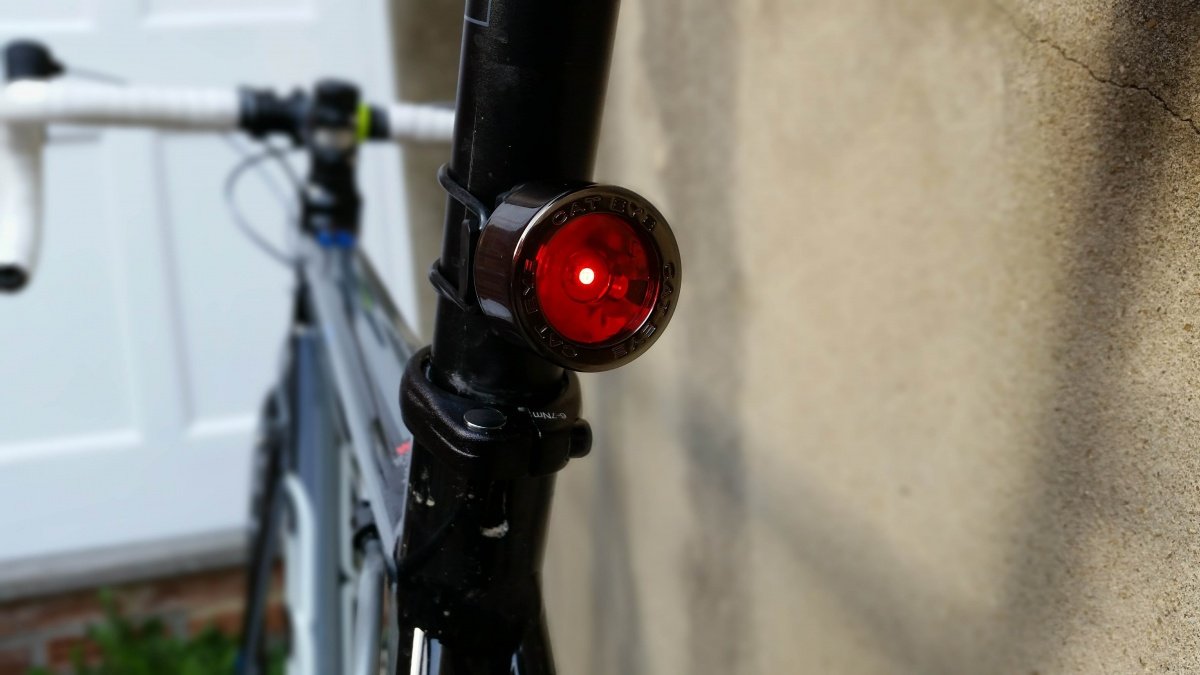 Safety lights are inexpensive and tend to have a low output. Some people use these as a blinker for cycling during the day as they are often very compact. Safety lights are also very useful as a backup light. Unfortunately even the most regimented of us forgets to charge our bike lights for the commute home. Safety lights may not be as powerful as you main rear bike light but they will do enough to let other road users see you on your ride home. Safety lights can cost as little as a few pounds from most bike shops. You can even pick them up as a front and rear pair from many supermarkets. Although you can buy too cheaply and may find you end up buying again.Tips: Cycling to Work
Safety lights are inexpensive and tend to have a low output. Some people use these as a blinker for cycling during the day as they are often very compact. Safety lights are also very useful as a backup light. Unfortunately even the most regimented of us forgets to charge our bike lights for the commute home. Safety lights may not be as powerful as you main rear bike light but they will do enough to let other road users see you on your ride home. Safety lights can cost as little as a few pounds from most bike shops. You can even pick them up as a front and rear pair from many supermarkets. Although you can buy too cheaply and may find you end up buying again.Tips: Cycling to Work
Weatherproof
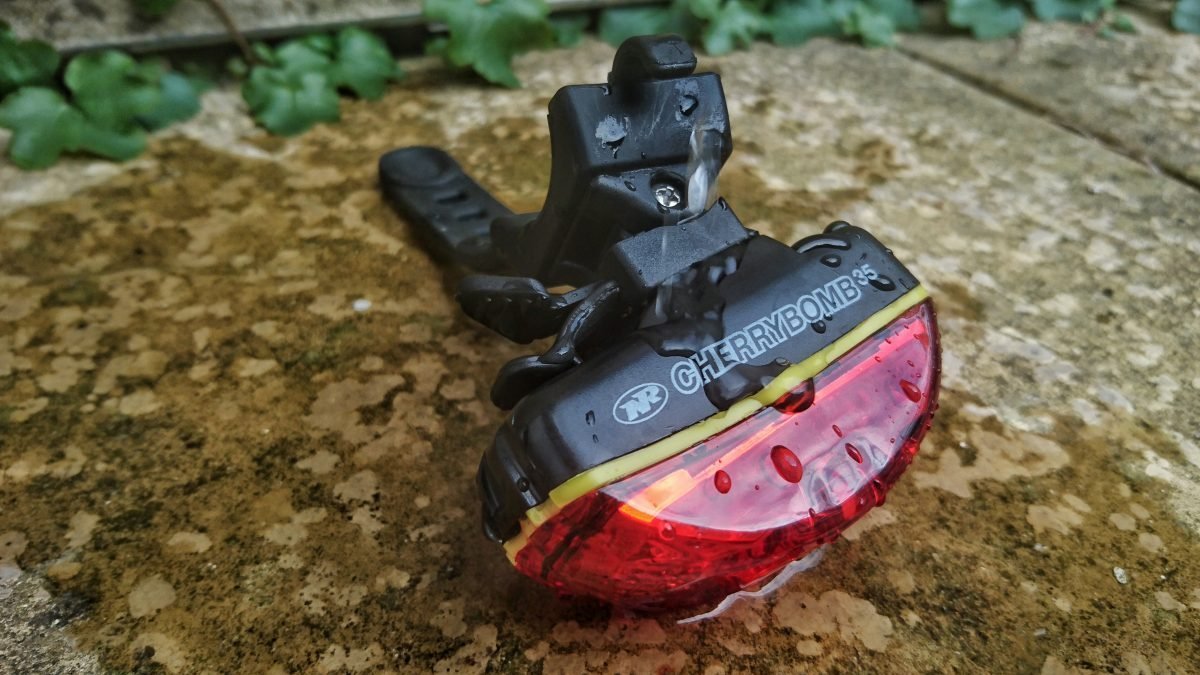 You may be an all-weather rider or just unlucky enough to get caught in the rain. Either way, you need to make sure your (rear) bike lights are water/weatherproof. Lights that are rechargeable will usually be a sealed unit and highly resistant to water and dirt getting inside. But lights that allow you to change the batteries need to have a good seal. This is usually some form of rubberised band or washer around the opening. It is worth looking at the way the battery powered units open and close. A screw closure will tend to offer a tighter seal than that of a unit that presses closed.
You may be an all-weather rider or just unlucky enough to get caught in the rain. Either way, you need to make sure your (rear) bike lights are water/weatherproof. Lights that are rechargeable will usually be a sealed unit and highly resistant to water and dirt getting inside. But lights that allow you to change the batteries need to have a good seal. This is usually some form of rubberised band or washer around the opening. It is worth looking at the way the battery powered units open and close. A screw closure will tend to offer a tighter seal than that of a unit that presses closed.
Conclusion
As we said at the start of this guide - rear bike lights can be so compact, lightweight and tidy, we don't see why you wouldn't use them all-year-round. That being said though, lights (front & rear) are a legal requirement in the UK if you are cycling at night. Pricing can vary from the ridiculously cheap to the very expensive. It should be easy to find a suitable bike light to fit your budget. Think about the type of cycling you are doing and how long you are planning to ride for. Always make sure your lights are charged before you ride. We also strongly recommend you carry/fit a set of safety lights for those 'just in case' moments.Ride Safe.

